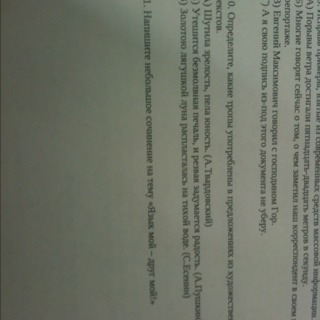Предмет: Русский язык,
автор: iPhone3G
Определите какие тропы употреблены в предложениях из художественных текстов
Приложения:

Ответы
Автор ответа:
2
1, 2 - олицетворение. 3- метафора
Похожие вопросы
Предмет: Русский язык,
автор: светик419
Предмет: Русский язык,
автор: Аноним
Предмет: Английский язык,
автор: angell283
Предмет: Литература,
автор: Sselicka
Предмет: Английский язык,
автор: plgna